Generalizing rivers and lakes - river network analysis
After explaining how the Openstreetmap data is processed in the previous part i will here explain the process of analyzing the river network to determine the river importances and sizes.
Rating rivers - on importance and size
As i have explained in the introduction properly selecting rivers for display on a low zoom level map requires a consistent importance rating for the rivers. The question is how this should be defined. Note i distinguish between size and importance here and as i also explained the river size is not a good measure for its importance. It is common understanding that for example the ![]() Amazon river is an important river even in its upmost part where its size might be much smaller than many rivers one would consider less important.
Amazon river is an important river even in its upmost part where its size might be much smaller than many rivers one would consider less important.
A logical definition for the importance of a river would be the size at its lower end (the Amazon for example is important because it is a really large river at its mouth). In a complex river network with branching and confluences the question then is of course what the lower end of a river is. Usually when two rivers converge the resulting river is considered to be the continuation of the larger of the tributaries. But there are exceptions of this rule usually established by human convention over time. In case of bifurcations things depend entirely on conventions. But it is common for small scale bifurcations were both arms meet again soon after that both are considered to be parts of the same river if their size is not very different.
To allow automated calculation i use the following approximation to determine the importance of a river segment (a segment here being a river section only connected to other segments at its ends).
- Determine the length of every segment.
- Propagate and accumulate the segment sizes downstream as an approximation for the river size. The resulting quantity is the upstream length, i.e. the combined length of all waterways upstream of this point.
- From every river mouth (or from lower ends in endorheic basins) propagate back the final size upstream as the importance scale. At each branching the propagation follows the upstream branch with the higher upstream length at this point. The smaller brach is initialized with its upstream length as new importance and this is further propagated upstream as well.
The following images illustrate this process on the example of Central Europe. The first one shows the upstream length of the river segments and the second the importance scale calculated from that.
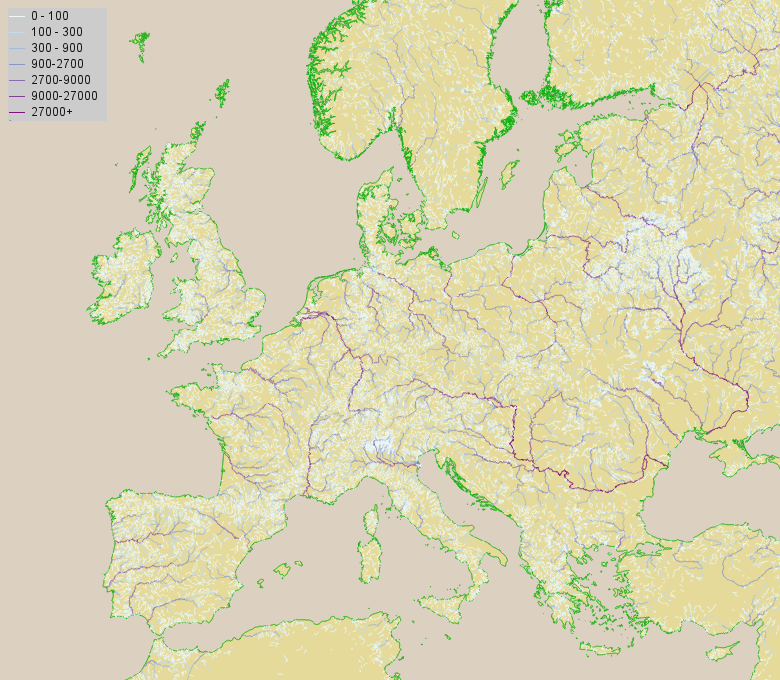
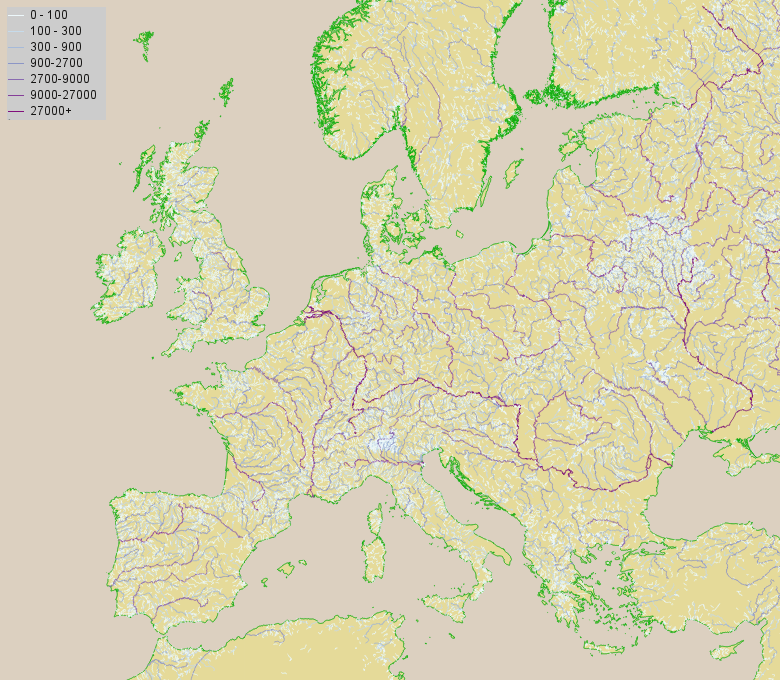
Limitations of this approach
There are a number of cases where this method fails, like in case of the ![]() Saône/
Saône/![]() Rhone and where it leads to the right result although historic convention comes to a different conclusion, like in case of the
Rhone and where it leads to the right result although historic convention comes to a different conclusion, like in case of the ![]() Aar/
Aar/![]() Rhine.
Rhine.
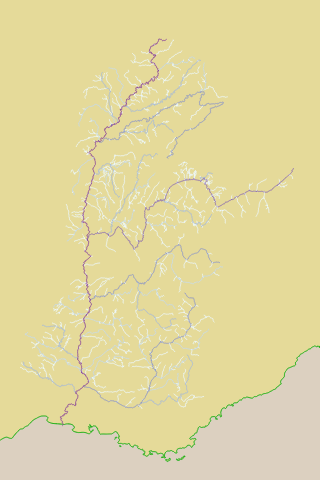
|
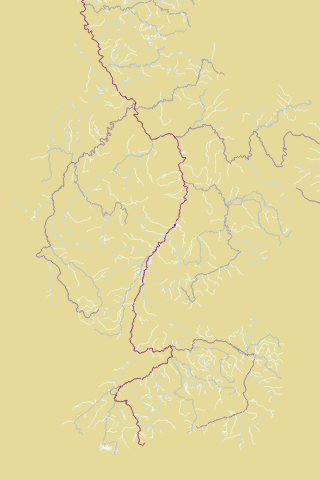
|
| wrong importance rating of the Saône/Rhone | factually correct importance rating of the Aar/Rhine |
The upstream length is of course not a very good approximation for the river size since it depends on the density of waterways in the area (both the factual one and what has been actually mapped) and it also does not take into account variable precipitation. If the latter should be considered is an open question however since it would much downrate rivers in dry regions relative to the size of their watershed.
In any case both the river size and the importance derived from it are needed for the further generalization steps which are described in the next part.


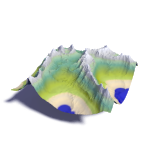

Visitor comments:
no comments yet.
By submitting your comment you agree to the privacy policy and agree to the information you provide (except for the email address) to be published on this website.